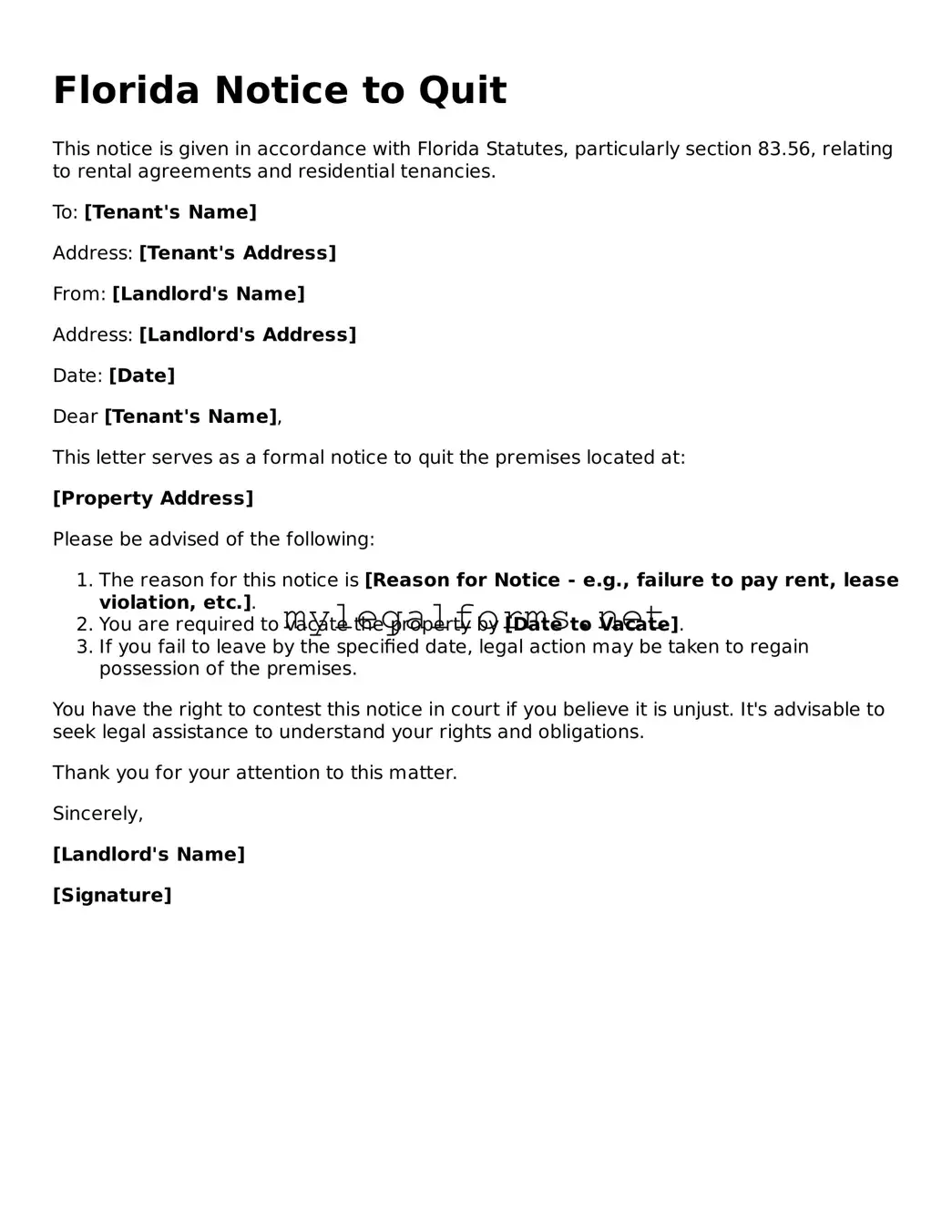Florida Notice to Quit
This notice is given in accordance with Florida Statutes, particularly section 83.56, relating to rental agreements and residential tenancies.
To: [Tenant's Name]
Address: [Tenant's Address]
From: [Landlord's Name]
Address: [Landlord's Address]
Date: [Date]
Dear [Tenant's Name],
This letter serves as a formal notice to quit the premises located at:
[Property Address]
Please be advised of the following:
- The reason for this notice is [Reason for Notice - e.g., failure to pay rent, lease violation, etc.].
- You are required to vacate the property by [Date to Vacate].
- If you fail to leave by the specified date, legal action may be taken to regain possession of the premises.
You have the right to contest this notice in court if you believe it is unjust. It's advisable to seek legal assistance to understand your rights and obligations.
Thank you for your attention to this matter.
Sincerely,
[Landlord's Name]
[Signature]
